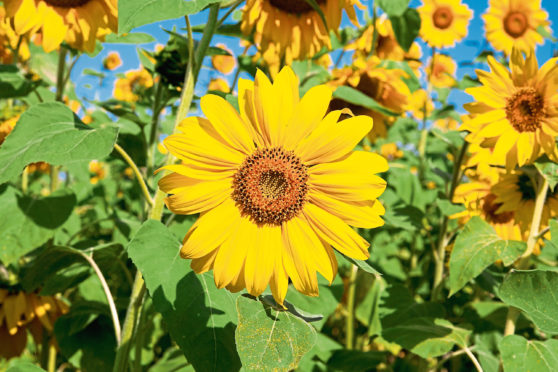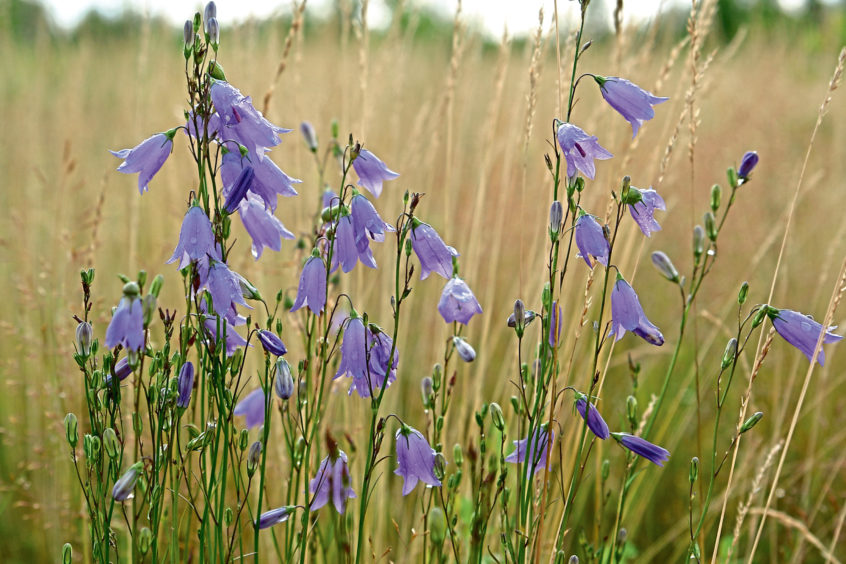
A few days ago, beside a footpath across the Polmaddy Burn near Carsphairn, I found a patch of Scottish bluebells growing in the rocky soil.
These little flowers are not the same as the spring bulbs with which they share a name, instead they are a native form of campanula and in some parts of the country they are also known as harebells, for the simple reason that they grow in the sorts of grassland where hares are often found.
The campanula family is a large one made up of tall flowers that hold their own in a busy border and also of small and low-growing plants that are at their best scrambling across a rock garden. Despite the delicate appearance of the flowers, all of them are tough perennials that will come back year after year in colours that range from white, through cool blue to almost purple, with an occasional pink flower appearing too.
Even Campanula rotundifolia, the one I found growing up on the moors, makes a great garden plant especially if you have sandy soil or a patch of gravel where the roots will get all the moisture they need but without any risk of becoming waterlogged.
You should never collect flowers from the wild, but fortunately Scottish bluebells grow easily from seed and once established they’ll spread themselves around without becoming a nuisance.
Other campanulas, such as the tall Campanula glomerata ‘Superba’ are less fussy about soil and will thrive happily in most conditions, while Campanula poscharskyana, a low-level spreader that is native to Serbia, is best grown along the edge of a border to prevent it from becoming swamped by taller plants. Campanulas flower from June until September and, along with agapanthuses, they add a welcome touch of blue among the stronger colours of high summer when heleniums, rudbeckias, echinaceas and other prairie plants from North America begin doing their stuff. I’m particularly fond of one of this tribe, the perennial sunflower Helianthus ‘Lemon Queen’ that, every year climbs to more than two metres in height and is covered with masses of radiant sunflowers.
If you’ve got the space then it’s worth giving it a go. It’s an unfussy plant that will grow in any decent soil.
I have many different kinds of marginal plants in my garden, the sorts of things such as flag irises, hostas, primulas and astilbes that do well in damp soil and can often be found growing around the edges of ponds. All these have relished the recent wet spell, but my roses have struggled, because of the constant rain. Yet, ever the optimist, I’d like to grow more of them because even on a wet day the scent or a rose is an essential ingredient of summer.

Enjoy the convenience of having The Sunday Post delivered as a digital ePaper straight to your smartphone, tablet or computer.
Subscribe for only £5.49 a month and enjoy all the benefits of the printed paper as a digital replica.
Subscribe © Shutterstock
© Shutterstock